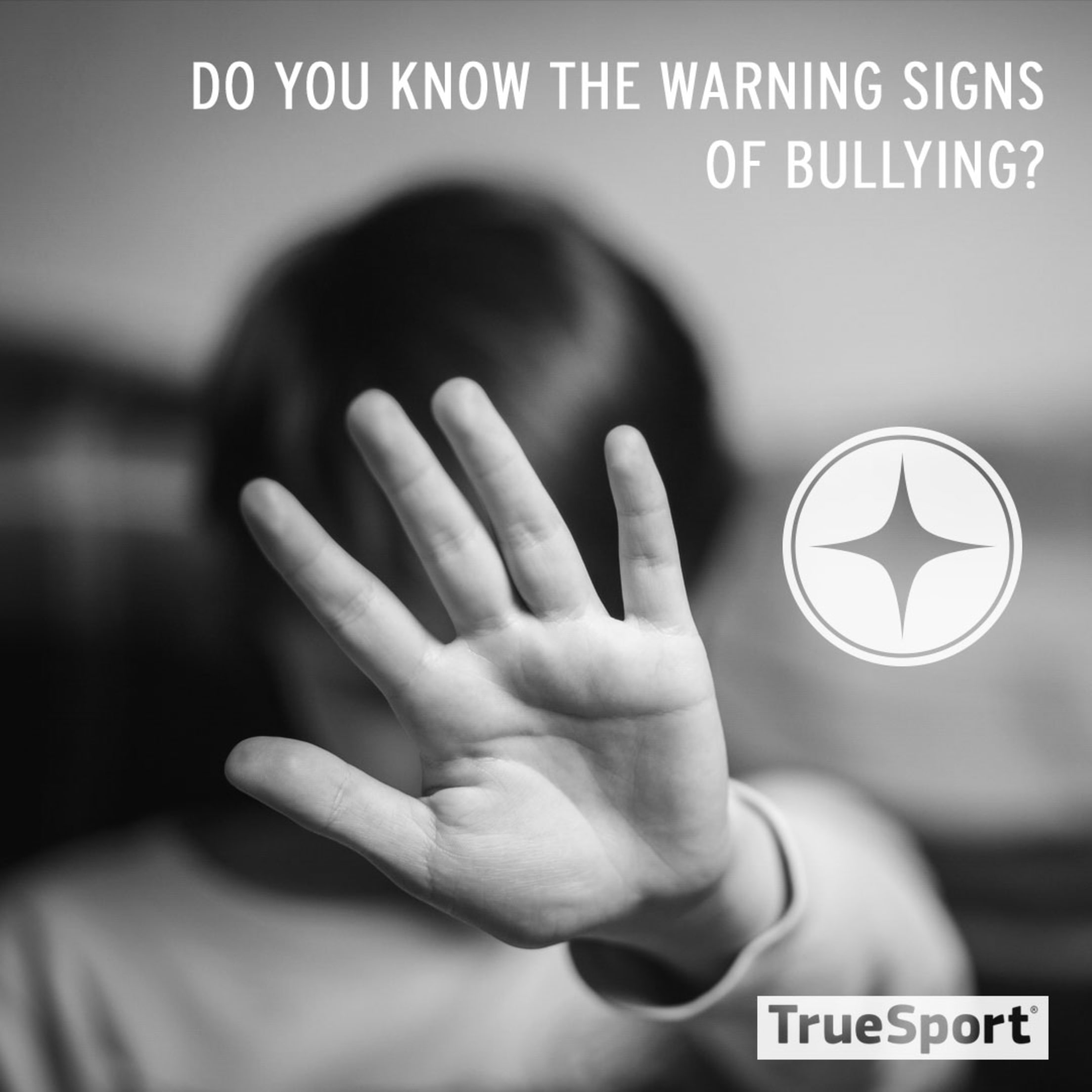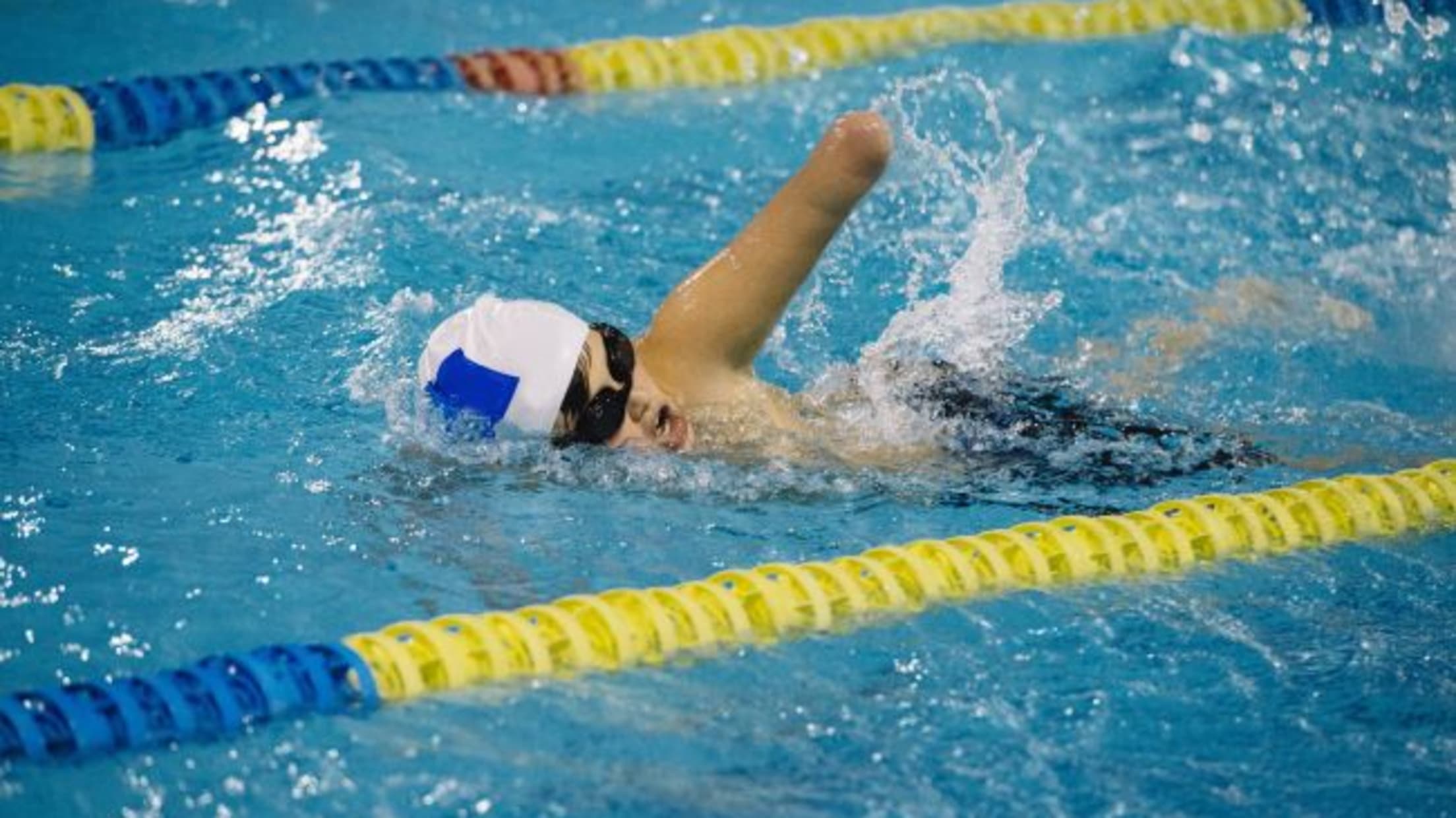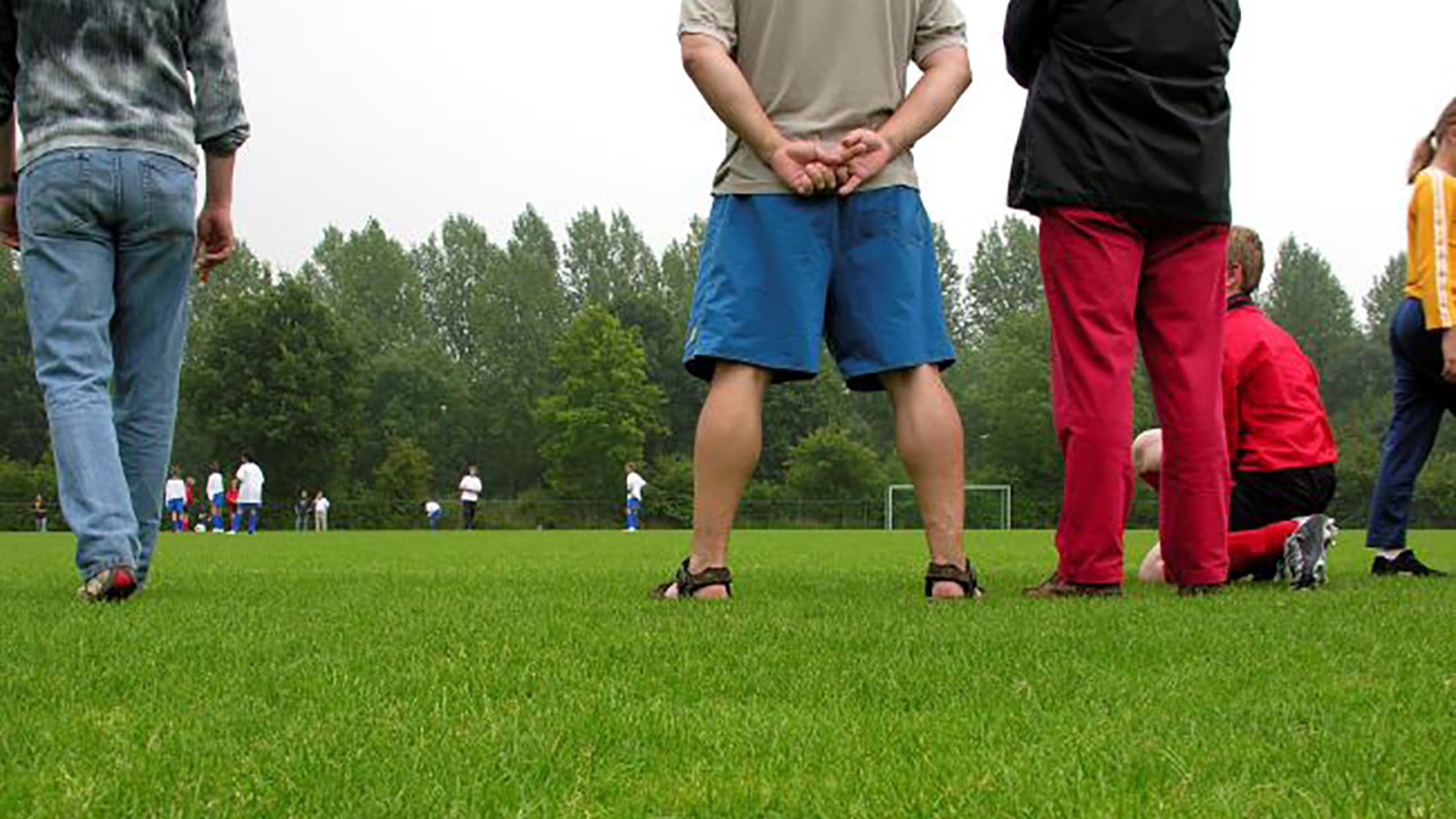TrueSport: October 2019

What you need to know about disability etiquette, why it's important to avoid tension on the sidelines and eight ways athletes can resolve conflicts without bullying this month from TrueSport.
Trending
Disability etiquette: What you need to know
We live in a diverse world of people. With over 60 million people with disabilities in the nation, there's a good chance you have an athlete with a disability in your community. As sport continues to evolve to include more athletes with disabilities, it is becoming more and more imperative that we all learn disability etiquette.
TrueSport has partnered with Disabled Sports USA, the national leader in community-based adaptive sports, to help create a more positive and inclusive sport environment for all youth. This starts with the simple recommendations below from Disabled Sports USA on how to best interact with and support people with disabilities.
General Best Practices
- Use person-first language to put the athlete first.

People-first language:
- Person/Athlete with a disability
- Person/Athlete who uses a wheelchair or scooter
- Person/Athlete with an intellectual or cognitive disability
- Person/Athlete with multiple sclerosis
- Person/Athlete with a mental health condition or diagnosis
- Blind or low vision
- Deaf or hard of hearing
Language to avoid:
- Disabled or handicapped person
- Confined to a wheelchair, wheelchair bound
- Special, mentally retarded, slow or simple person
- Afflicted by multiple sclerosis or "victim"
- Mentally ill or crazy
- Visually impaired
- Hearing impaired
- Don't assumeAsk how you can help instead of making assumptions about what an athlete can and cannot do. Avoid the urge to help simply to speed up processes. Instead, build in extra time for the athlete to get equipment set up or complete a skill progression. Some athletes may need more time to think or speak, so be patient when waiting for a response.
- Don't ignoreTake the time to get to know your athlete and how their disability might affect their participation and make appropriate and reasonable modifications.
- Ask prior to moving or touching equipmentUnderstand that an athlete's adaptive equipment, such as a wheelchair, walker, or cane, is part of their personal space. Only adjust the equipment if requested, as unexpected shifts could cause the athlete to become off balanced and cause injury.
__
Communication Best Practices
Do:
- Speak directly to the athlete using your regular speech patterns. Only speak louder or slower if requested to do so by the athlete.
- Face the athlete when speaking and try to avoid blocking the mouth or chewing anything so that those who are deaf or hard of hearing can clearly see your lip movements.
- Put yourself on the same level as the athlete when speaking to an athlete who uses a wheelchair or is short of stature for more than a minute or two.
- Provide extra time for athletes with cognitive or intellectual disabilities to formulate thoughts and complete sentences. Try not to interrupt or provide words for the athlete as this could further delay processing time. Instead, consider ways to ask questions that require only yes/no answers.
- Make sure to introduce yourself to an athlete who is blind or has low vision they know who is speaking. Prior to ending the conversation, let them know you will be leaving and who will be guiding them next or when they should expect your return.
Don't:
- Be afraid to ask an athlete with a speech impairment to repeat themselves if you have difficulty hearing or understanding.
- Over-inflate the successes of an adaptive athlete. While PR times or other goal-related successes should be celebrated as with any other athlete, over-hyping achievements for adaptive athletes gives the impression that expectations were not high to start.
______
Coaching Best Practices
- Take the time to look around your facility and ensure that there are no physical barriers to participation.Is parking close to the venue? Are there enough handicapped parking spaces?
- Are areas accessible to all without having to navigate stairs, thick grass, etc.?
- Are hallways wide enough for wheelchairs?
- Is the facility tidy and clear of any obstacles?
- Are equipment areas or water stations set at a height that is accessible for all?
- Have the same expectations of all athletes as you would any other in your program. This means requiring them to show up on time, participate in the full lesson to the best of their ability, etc. While modifications can be made, the focus should be on independence and inclusion.
- Don't be afraid to try out a variety of adaptations to find the one that works best for your individual athlete. Prior to the start of the activity, ask the athlete what they need and want, and keep up a dialogue with the athlete throughout the process.
- Schedule more breaks if stamina is an issue, consider quieter lesson areas or times of day if the athlete is easily over-stimulated, etc.
- Ensure proper adaptive equipment is available so they can be ready to start lessons at the appropriate time.
- Allow athletes to choose to challenge themselves by providing appropriate skill progressions to meet their goals.
- Consider using Universal Design coaching practices where suitable.Universal Design: Planning an activity to ensure everyone can participate by considering all needs and abilities ahead of time. You can find links to examples below.Specific to Physical Education
- Not Physical Education-Specific
______
Taking the time to learn about disability and general etiquette is a great first step to creating a positive and inclusive environment. While the tips provided by Disabled Sports USA will help to ensure that you have the basics, learning more about your individual athlete, their needs, and communication preferences will allow you to create a positive experience for all.
Parents
Why it's important to avoid tension on the sidelines
"I joke that when my daughter was playing tennis, I was just a chauffeur taking her to practice. And sometimes, that's all kids really need you to be," says Dr. Patrick Cohn, a sports psychologist at Peak Performance Sports. He's only partially joking. Most parents could benefit from decreasing their tension and taking a more passive role when it comes to youth sports.
"We tell parents that their only goal is to make sure that their kids are having fun. Your job is to support kids when it's appropriate," Cohn adds. With that in mind, here's why and how to avoid being tense and distracting on the sidelines.
Sideline coaching
Your goal as a parent may be to see your child having fun, but research has shown that sideline behavior rarely reflects that goal. "Shouting instructions from the sidelines is a major no-no," says Cohn. Not just because it's irritating for the other parents, but because it can actually hurt your child's performance."

"Remember, the coach is there to coach the kids, and having another person shouting can also make them lose focus, get embarrassed, or feel pressure to perform perfectly for the parents shouting instructions all the time," Cohn adds.
Your 'cheering' style
Showing up with your face painted in team colors while the other parents are in business casual? Try not to stand out too much.
"Pay attention to the cues from the other parents. Parents should be cheerleaders, reinforcing when they're playing well but not overdoing it," says Cohn. "Depending on the sport, there are different rules of behavior. Golf has quiet clapping, hockey has more yelling."
"If you know you have trouble controlling your temper and what you do on the sidelines, I recommend you watch the game from afar where your athlete can't see you. Watch up on a balcony, or even behind a tree…if you truly want your athlete to have more fun and be more focused, take yourself out of the equation if you know you're a distraction."
Handling a bad call
Your anger with a bad call in a child's game may be the same rage you feel on the road, which research had shown is tied to ego defensiveness and a control-oriented mindset. Angry reactions on the sideline often happen because parents make the game about them and take events personally. Even if you think you're being subtle when you disagree with a 'bad call,' your child likely is picking up on it.
"Your tension is extremely obvious to young athletes, and to yell at people around you is actually disrespectful to your kids," Cohn says. Instead, let bad calls be a learning opportunity for them. If the ref makes a call you don't agree with, that's OK.
You won't agree with every call, and the referee might even be in the wrong. But if you complain every time you disagree, you're teaching your child that that behavior is acceptable in life. Keep in mind that your child will have to deal with a teacher or boss who isn't always fair and can't always rely on you to 'fix' everything.
Non-verbal behaviors
"Kids are easily distracted during games. If you're arguing on the sidelines with another parent, they're likely going to notice, be embarrassed, and even alter their performance," says Cohn. "If I roll my eyes, my daughter can see from 50 yards away."
"I try to teach athletes to stay focused on the field or court, but that's hard. Kids pick up on parents' non-verbal cues. I've heard parents tell me that they got up to use the restroom, but their athlete assumed they had gotten up because they were upset with the child's performance. If a kid is feeling your tension, they tend to start playing safer and more tentatively, in fear of making mistakes."
______
Dr. Cohn concludes, "From a long-term perspective, the athlete won't have as much fun in the sport [if they're worried about their parents on the sidelines], because they're so tuned into what they think their parent is feeling during their game, which can lead to them leaving the sport altogether."
Bottom line: Knowing how to best support your athlete is key in creating a positive sport experience for not only your athlete, but also for their team and the rest of the parents on the sidelines supporting their athletes.
Coaches
Eight ways athletes can resolve conflicts without bullying
When athletes on your team are having disagreements, as a coach it's natural to want to jump in and solve the conflict for them. But while you can help make athletes more ethical, you shouldn't make decisions for them -- you'd actually doing them a disservice by helping them avoid conflict.
Before you can teach how to resolve disagreements, it's important to understand that conflict and bullying are different things. Conflict is a disagreement where both sides can express their views, while bullying is a negative behavior in which one person has power over another.
Here's how you can facilitate disagreements amongst teammates to keep conflict from turning into bullying.

Establish a conflict policy early
As your season begins, sit down with the team and create a conflict plan or policy: A set of rules and recommendations for how teammates can best deal with conflicts amongst themselves. This might include a journaling exercise, bringing conflicts to you as the coach before hashing them out with a teammate, or setting a weekly team meeting where your athletes can address problems they're having.
"Set clear rules about behavior and expectations -- if you set those expectations for teams early, it makes it clear how things like conflict or bullying will be handled when it does come up," says Bailey Huston, a coordinator at PACER's National Bullying Prevention Center.
Focus on building team culture
One study suggests that the best way to deter bullying is to create strong team camaraderie. If your team has a strong culture of mutual respect and friendship, disagreements are more likely to be resolved in mature, healthy ways.
As a coach, whether it's conflict or bullying, you have a big role to play when you see a disagreement -- but you're not going to be the one to solve it. "Talk separately with the students first -- that allows you to assess the situation and get both points of view," says Huston. "If the conflict is still 'hot,' bringing everyone together sometimes isn't the most productive way to get to the root of what's going on."
"Start with a one-on-one conversation. You want to get to the core of what's actually going on before you help them hold a conversation to resolve the situation."
Help students find resolutions separately
Huston suggests telling athletes to pause and think about the ways in which they would like to see the conflict resolved -- what is the outcome they're hoping for? Younger athletes may not have the emotional ability to calmly work through conflict when they haven't had time to sit with it.
Try having your athletes do a journaling exercise where they write out the conflict and their preferred resolution. "Putting pen to paper is a great way to do this -- seeing things written out can give you a new perspective," she adds. "It can also help them work through what to say and how to respond to people."
Teach assertiveness versus aggressiveness
"At PACER, we promote this idea of self-advocacy, which is speaking up for yourself and what you need," says Huston. "That's assertiveness, but there's a difference between that and aggression. Aggression comes off as attacking others or ignoring others' needs and has negative emotions around it. Being assertive is stating your opinion and thoughts while being respectful of the needs of others."
Press pause when needed
Teach your students that a conflict sometimes requires more than one conversation to solve. "Try to keep your emotions in check, remain calm, and keep eye contact," says Huston. "Conversations can get emotional and that's fine. It's OK to tell the other person that you need a minute to collect yourself. Just say 'I want to finish this conversation, but I need to take a minute,' and then you can talk when it's a better time.' Don't just storm away though -- that escalates the situation."
Practice 5-4-3-2-1
"Teach students this activity to ground themselves when they're feeling stressed or emotional," says Huston. "Think of five things you can see around you, four things you can touch around you, three things you can hear around you, two things you can smell around you, and one thing you can taste. It's a great way to bring yourself back to the present and calm yourself down. Sometimes, conflicts get blown up and can turn from conflict to bullying -- where a student is trying to hurt the other -- when a student gets overly emotional and out of the moment. This exercise can help to ground them."
Keep conflict resolution in real life
Urge your athletes to keep conflicts in real life versus allowing the communication to continue online. "In-person is best so you can see the other person's reaction," says Huston. "With cyber-bullying, what we see is that it's easier to say things to a person that you would never say to their face because you'd have to see their emotional reaction. Things can also escalate and easily get misinterpreted when communication is digital."
Handling group conflict
Unfortunately, team conflicts often end up starting with two people and escalating to team-wide drama. "This is when it's a good time for an adult to get involved and help unwind these complex relationships," says Huston.
"With bullying, power can come in numbers: a group of people versus one person creates a power imbalance, so that's something to watch for. Trying to break conflict resolution into one-on-one conversations is ideal. Try to create a level playing field for your athletes because that's where conflict will be best resolved. As a coach, if you can balance that power and let those students separate to have those conversations, that's super helpful."
______
It's important to keep in mind that conflict is okay and it's a natural thing experienced between people.
"As adults, we know that conflict is part of everyday life. But you have to understand the difference between conflict and bullying," says Huston. "Strong words can be exchanged, but not all conflict is bullying. Conflict is a great opportunity to make relationships better, and an important part of expressing your needs. It can be stressful, and it can hurt, but a lot of good can come out of it."
About TrueSport
TrueSport®, a movement powered by the experience and values of the U.S. Anti-Doping Agency, champions the positive values and life lessons learned through youth sport. TrueSport inspires athletes, coaches, parents and administrators to change the culture of youth sport through active engagement and thoughtful curriculum based on cornerstone lessons of sportsmanship, character-building and clean and healthy performance, while also creating leaders across communities through sport.
For more expert-driven articles and materials, visit TrueSport's comprehensive LEARN resource.
This content was reproduced in partnership with TrueSport. Any content copied or reproduced without TrueSport and the U.S. Anti-Doping Agency's express written permission would be in violation of our copyright, and subject to legal recourse. To learn more or request permission to reproduce content, click here.
